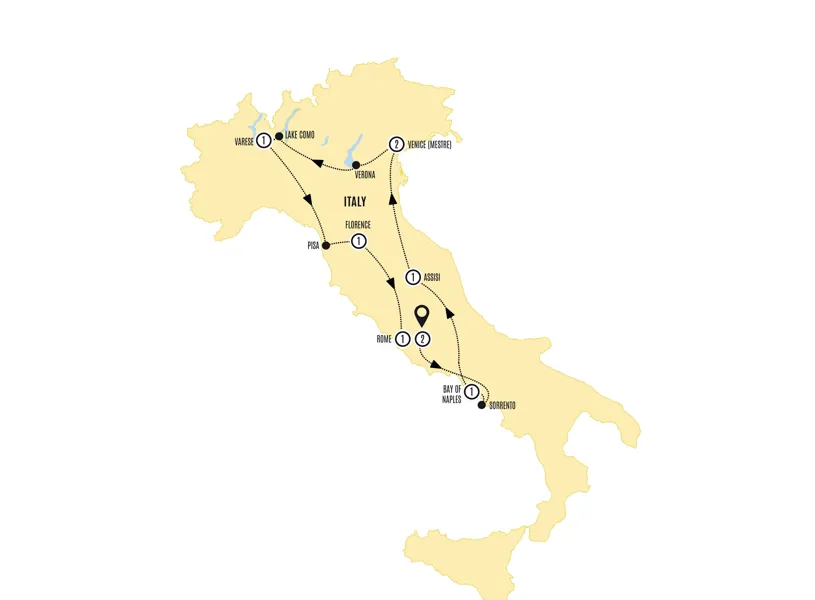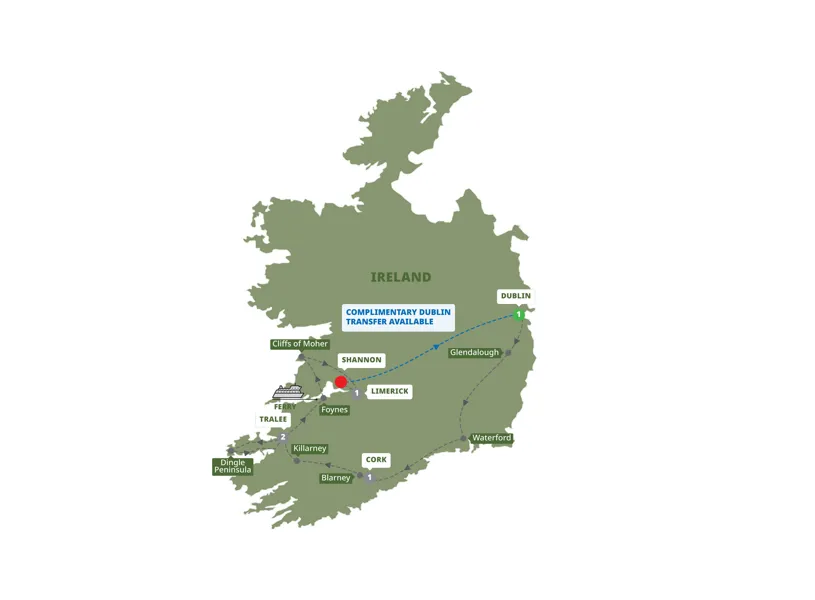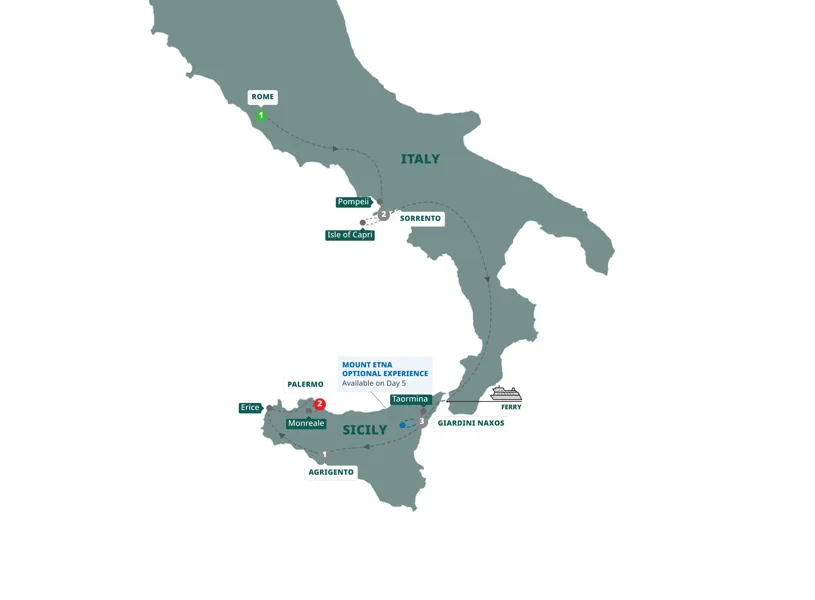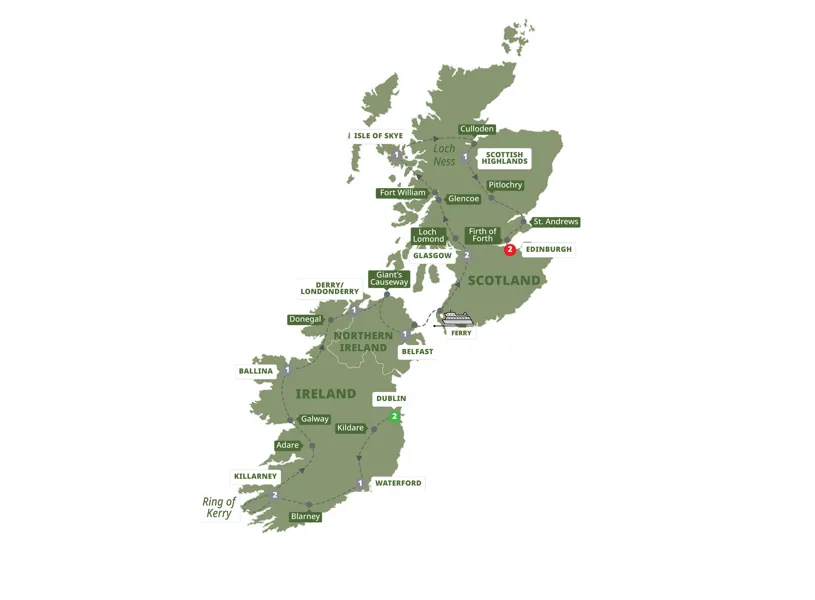Let us guide you to the must-see landmarks, hidden gems, and immersive cultural experiences that Europe has to offer, ensuring an exceptional and memorable journey
11 Must-try European Dishes for First-time Visitors

European cuisine is as diverse as its landscapes, offering a culinary journey that is both delicious and culturally enriching. Embarking on your first European adventure is a journey of new experiences, and what better way to discover new places than through the cuisine? Here are 11 must-try European dishes that will not only tantalize your taste buds but also offer a glimpse into the rich history and culture of each country. These dishes provide a perfect introduction to Europe’s rich food heritage, allowing first-time visitors to savor the flavors that define each region.
1. Spaghetti alla Carbonara - Rome, Italy
Brief History and Origin of Spaghetti alla Carbonara in Italy
Spaghetti alla Carbonara is a classic Roman dish with roots dating back to the mid-20th century. It is believed to have been invented by Italian charcoal workers ("carbonari"), who prepared the dish using simple ingredients like eggs, cheese, pancetta, and black pepper.
Why You Need to Try Spaghetti alla Carbonara in Rome, Italy
Spaghetti alla Carbonara is one of the most beloved Roman dishes, and there's no better place to try it than in Rome itself. The dish is deeply rooted in the culinary traditions of the city, and, unlike versions found elsewhere, true Roman Carbonara is never made with cream, relying instead on the perfect emulsion of eggs and cheese to create its creamy sauce. Romans take pride in their Carbonara, and each restaurant often claims to have the best, making it a dish that locals and tourists alike seek out.
Cultural Importance of Spaghetti alla Carbonara in Italy
Carbonara is a staple of Italian cuisine, embodying the Italian philosophy of using few but high-quality ingredients. It represents the ingenuity of Italian cooks who create remarkable dishes from simple, accessible components.

2. Pizza - Naples, Italy
Brief History and Origin of Pizza in Italy
Pizza, as we know it today, originated in Naples, Italy, in the late 18th century. While flatbreads with toppings have been consumed for centuries in various cultures, the modern pizza was developed in Naples when tomato was added to the base, creating what we now recognize as pizza. The classic Margherita pizza, with its simple toppings of tomato, mozzarella, and basil, was created in 1889 to honor Queen Margherita of Savoy.
Why You Need to Try Pizza in Naples, Italy
Naples is the birthplace of pizza, and there’s no better place to experience the authentic taste of a Neapolitan pizza. The city's pizzerias are renowned for their strict adherence to traditional methods, using only the finest local ingredients, including San Marzano tomatoes and fresh mozzarella di bufala. The wood-fired ovens used in Naples give the pizza its characteristic crisp crust and slightly charred flavor.
Cultural Importance of Pizza in Naples
Pizza is not just a dish in Naples; it’s a cultural icon. It reflects the simplicity and richness of Italian cuisine, where high-quality ingredients are used to create something truly exceptional. In Naples, pizza is a symbol of the city’s history, pride, and culinary traditions, making it a must-try for anyone visiting Italy.
3. Colcannon - Wild Atlantic Way, Ireland
Brief History and Origin of Colcannon in Ireland
Colcannon is a traditional Irish dish, primarily made from mashed potatoes mixed with cabbage or kale, and often includes leeks, scallions, or chives. It dates back to the 18th century and was traditionally eaten on Halloween with charms hidden inside as a form of fortune-telling.
Why You Need to Try Colcannon in Ireland
The Wild Atlantic Way, with its rugged landscapes and rich agricultural heritage, offers the freshest potatoes and greens, making this dish a true taste of Ireland.
Cultural Importance of Colcannon in Ireland
Colcannon is more than just comfort food; it is a dish that connects modern Ireland with its agrarian past. It’s a symbol of Irish hospitality and the country's deep connection to the land.

4. Traditional Paella Valenciana - Valencia, Spain
Brief History and Origin of Paella in Spain
Paella Valenciana originated in the mid-19th century in the region of Valencia. Traditionally made with rabbit, chicken, snails, and local beans, it’s cooked in a wide, shallow pan over an open flame, allowing the rice to develop a crispy bottom layer known as "socarrat."
Why You Need to Try Paella in Valencia, Spain
Valencia is the birthplace of Paella, and there's no better place to experience the authentic version of this dish, prepared with locally sourced ingredients and centuries of tradition.
Cultural Importance of Paella in Spain
Paella is not just a dish; it’s a social event in Spain. It brings families and friends together, symbolizing community and the importance of shared meals in Spanish culture.
5. Fish and Chips - London, UK
Brief History and Origin of Fish and Chips in the UK
Fish and Chips became popular in Britain in the 19th century, originally as a working-class meal. Fried fish was brought to England by Jewish immigrants, and when paired with fried potatoes, it became an iconic British dish.
Why You Need to Try Fish and Chips in London, England
London’s fish and chips are some of the best, particularly when enjoyed at a traditional "chippy" near the Thames or in one of the city’s historic pubs.
Cultural Importance of Fish and Chips in the UK
This dish is a national institution in the United Kingdom, symbolizing British culinary traditions and the country’s maritime heritage. It’s often associated with seaside towns and is a comforting reminder of home for many Brits.

6. Jambon-beurre - Paris, France
Brief History and Origin of the Jambon-beurre Sandwich in France
Jambon-beurre, a simple yet iconic French sandwich, consists of ham and butter on a fresh baguette. It became popular in the 19th century as a quick and affordable meal for Parisians.
Why You Need to Try a Jambon-beurre Sandwich in Paris, France
Parisian boulangeries are renowned for their exceptional baguettes, and when combined with high-quality French ham and creamy butter, this seemingly simple sandwich becomes a gourmet delight.
Cultural Importance of the Jambon-beurre Sandwich in France
The Jambon-beurre is a quintessential example of French cuisine’s ability to elevate the simplest ingredients into something extraordinary. It’s a staple of Parisian life and a symbol of the French love for quality food.
7. Boeuf Bourguignon - Burgundy, France
Brief History and Origin of Boeuf Bourguignon in France
Boeuf Bourguignon is a rich beef stew braised in red wine, traditionally from the Burgundy region. Its origins date back to the Middle Ages as a peasant dish, where tough cuts of meat were slowly cooked to tenderness.
Why You Need to Try Boeuf Bourguignon in Burgundy, France
Burgundy is famous for its wines, particularly the Pinot Noir used in this dish. Tasting Boeuf Bourguignon in Burgundy allows you to experience the dish as it was meant to be, with wine and beef that are both locally sourced and deeply intertwined with the region's identity.
Cultural Importance of Boeuf Bourguignon in France
This dish is a cornerstone of French cuisine, exemplifying the slow-cooking techniques and the deep flavors that characterize the country's culinary heritage. It also highlights the importance of wine in French culture, both as a drink and a cooking ingredient.
8. Wiener Schnitzel - Vienna, Austria
Brief History and Origin of Wiener Schnitzel in Austria
Wiener Schnitzel, a breaded and fried veal cutlet, is one of Austria's most famous dishes. Its origins are debated, but it was likely inspired by similar dishes from Italy or Germany and became a symbol of Viennese cuisine in the 19th century.
Why You Need to Try Wiener Schnitzel in Vienna, Austria
Vienna is the best place to enjoy an authentic Wiener Schnitzel, typically served with potato salad, lingonberry sauce, and a slice of lemon.
Cultural Importance of Wiener Schnitzel in Austria
Wiener Schnitzel is a beloved dish in Austria, representing the country's rich culinary traditions. It’s often enjoyed during celebrations and is a testament to Austria’s influence on Central European cuisine.

9. Waffles - Brussels, Belgium
Brief History and Origin: Belgian waffles, particularly those from Brussels, have a long history dating back to the Middle Ages. The Brussels waffle is light, crispy, and traditionally served with powdered sugar, although modern versions include various toppings.
Why You Should Try It Here: Brussels is the birthplace of this waffle variety, and the city’s street vendors and cafes serve them fresh, with a perfect balance of texture and flavor.
Cultural Importance: Waffles are a symbol of Belgian culinary ingenuity and are deeply embedded in the country’s food culture. They represent the Belgian love for sweets and are a must-try for any visitor.
10. Cock-a-Leekie Soup - Edinburgh, Scotland
Brief History and Origin: Cock-a-Leekie Soup is a traditional Scottish dish that dates back to the 16th century. Made from chicken, leeks, and sometimes prunes, it’s a hearty soup often served as a starter in Scottish homes.
Why You Should Try It Here: Edinburgh, with its rich history and vibrant culinary scene, offers the perfect setting to enjoy this warming dish, often found in traditional Scottish pubs and restaurants.
Cultural Importance: Cock-a-Leekie Soup is a staple of Scottish cuisine, representing the country’s love for simple, wholesome, and nourishing food. It’s often associated with winter celebrations and is a comforting dish that evokes the warmth of Scottish hospitality.
11. Käsespätzle - Nuremberg, Germany
Brief History and Origin: Käsespätzle is a traditional German dish from the Swabian region, made from soft egg noodles (Spätzle) layered with cheese and topped with crispy onions. It’s often referred to as the German version of macaroni and cheese.
Why You Should Try It Here: Nuremberg, known for its rich culinary traditions, offers an authentic taste of Käsespätzle, often served in cozy local eateries that focus on regional specialties.
Cultural Importance: Käsespätzle is more than just comfort food; it’s a dish that reflects the German emphasis on hearty, satisfying meals. It’s commonly enjoyed during cold weather and is a favorite at family gatherings and local festivals.
Frequently Asked Questions About Trying European Food for First-time Visitors
Many European countries have traditional beverages that pair well with their local dishes. For example, wine is a popular choice in France and Italy, beer in Germany and Belgium, and cider in Spain. Don’t hesitate to ask for a recommendation from your server or Travel Director!
Here are a few helpful links for ordering wine:
- GET Guide to Italian Wine for Beginners
- How to Order Wine in Italy
- How to Order Wine in French
- Top Wine Regions of France & Wines to Try
- Top Wine Regions of Portugal & Wines to Try
- Top Wine Regions of Spain & Wines to Try
- Top Wine Regions of Croatia & Wines to Try
- Top Wine Regions of Germany & Wines to Try
- Trying of Port in Portugal
- The History of Guinness in Ireland
- The History of German Beer & Styles to Try
- The History of Czech-Beer & Styles to Try
It’s helpful to research traditional dishes of the region before you go. Don’t hesitate to ask locals or restaurant staff for recommendations—they are usually happy to help you choose something authentic and delicious. You can also look for restaurants that are popular with locals for a more genuine dining experience.
Some must-try European dishes include Spaghetti alla Carbonara in Rome, Italy; Paella in Valencia, Spain; Wiener Schnitzel in Vienna, Austria; and Fish and Chips in London, UK. Each of these dishes offers a unique taste of the region’s culinary heritage.
We think so. Trying local food is a key part of experiencing the culture of any country. Each place you visit has its own specialties that reflect the local history, traditions, and ingredients, making it a rich and immersive experience.
Many European countries offer vegetarian and vegan options, although the variety may vary by region. In cities like Berlin, London, and Amsterdam, you’ll find a wide range of vegetarian and vegan restaurants. Traditional dishes like Italian pasta, Spanish gazpacho, and French ratatouille are also great vegetarian choices.
Most European restaurants are accustomed to catering to dietary restrictions and allergies. It’s a good idea to learn a few phrases in the local language to communicate your needs, or carry a translated card that explains your restrictions. Many menus will also indicate allergens, especially in larger cities.
The cost of dining out in Europe varies widely depending on the country and the type of restaurant. While fine dining can be expensive, there are plenty of affordable options, including local cafes, markets, and street food vendors, where you can enjoy authentic dishes without breaking the bank.
Yes, most popular European cities offer a variety of international cuisines, including familiar foods like burgers, pizza, and pasta. If you're going to off-the-beaten-path locations or traveling along country roads, you'll probably want to be a bit braver with your appetite, as there's no guarantee a smaller town or village will have food familiar to what you're used to at home. Trying at least a few local dishes is recommended to make the most of your travel experience.
Tipping practices vary across Europe. In some countries, like France and Italy, a service charge is often included in the bill, but it’s customary to leave a small tip if the service was good. In others, like the UK, tipping around 10-15% is standard. It’s always a good idea to check the local customs before dining out.





































